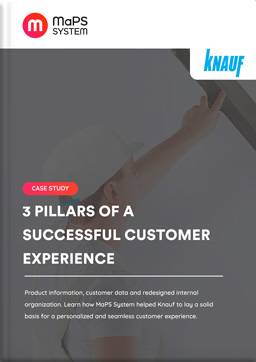No sooner said than done! As announced in our previous article about the implementation of a data management solution, we will now focus on the Master Data Management (MDM) solution and explore its range of methods, tools and processes related to the management of operational and strategic business data – master data.
Let’s start by having a closer look at some true and false parts from prevalent opinions around this topic!
-
A MDM solution is a project
False. A MDM solution is definitely not an “on-off” project. Implementing it is not only about integrating a technology, but also about understanding and defining business processes, choosing the best practices in data governance, and ensuring long-term monitoring of data quality and availability. Each aspect could easily be considered as a separate project, requiring constant monitoring and improvement, as well as an alignment between IT and business departments (but no reason to panic: a MDM solution is no rocket science, see point 4).
-
MDM is only for large businesses
False. It is hard to imagine a company without at least two different departments that need to collaborate, share, view and edit the same data and media. Poor data quality and data inconsistency, time loss and limited data availability occur regularly due to data silos. Weather operating an international corporation and employing thousands of people, or being a local company with few, and small teams – both parties encounter these data-driven challenges.
Besides, a small company working with a MDM solution means that implementing a sound data structure facilitates its international business expansion plans. Presumably, this is the case if the chosen solution and data model are perfectly scalable and adaptable to existing, and future business needs.
-
Your CRM needs MDM
True. According to the technology research institution – Gartner – through 2017, CRM leaders who avoid a MDM solution will derive erroneous results that annoy customers, resulting in a 25 percent reduction in potential revenue gains.
Managing your master data can be really critical to your CRM optimization, since it plays a vital role in creating a seamless customer experience. How? By aligning and synchronizing all operational master data related to the customer, product and service, composing a 360 degree view of the customer and allowing you to create a perfectly tailored customer experience.
- MDM is a big bang
False. Certainly, if you start implementing a MDM solution at a large, and global scope, it will seem too big to be done. But if the MDM solution is adopted in a step-by-step manner (i.e one data type at a time, one business case at a time), the entire implementation process is divided into several, but concrete projects, that seem more manageable and lets you quickly achieve great results.
- MDM and ERP can co-exist
True. Even if ERP systems and MDM solutions have a lot of differences (this topic deserves a separate blog article), they can co-exist and function together.
A MDM solution can use the data stored in the ERP system to synchronize and create a general view of all data, which is critical for analysis, reporting and decision making. Nevertheless, these factors highly depend on the flexibility of the MDM solution.
We surely hope to have uncovered the truth about MDM solutions, which have opened your eyes on the scope of this solution. Stay tuned for our next blog articles!
Here’s a Case Study about our client KNAUF, an international player from the construction industry, which further depicts the flexibility of a MDM solution:



